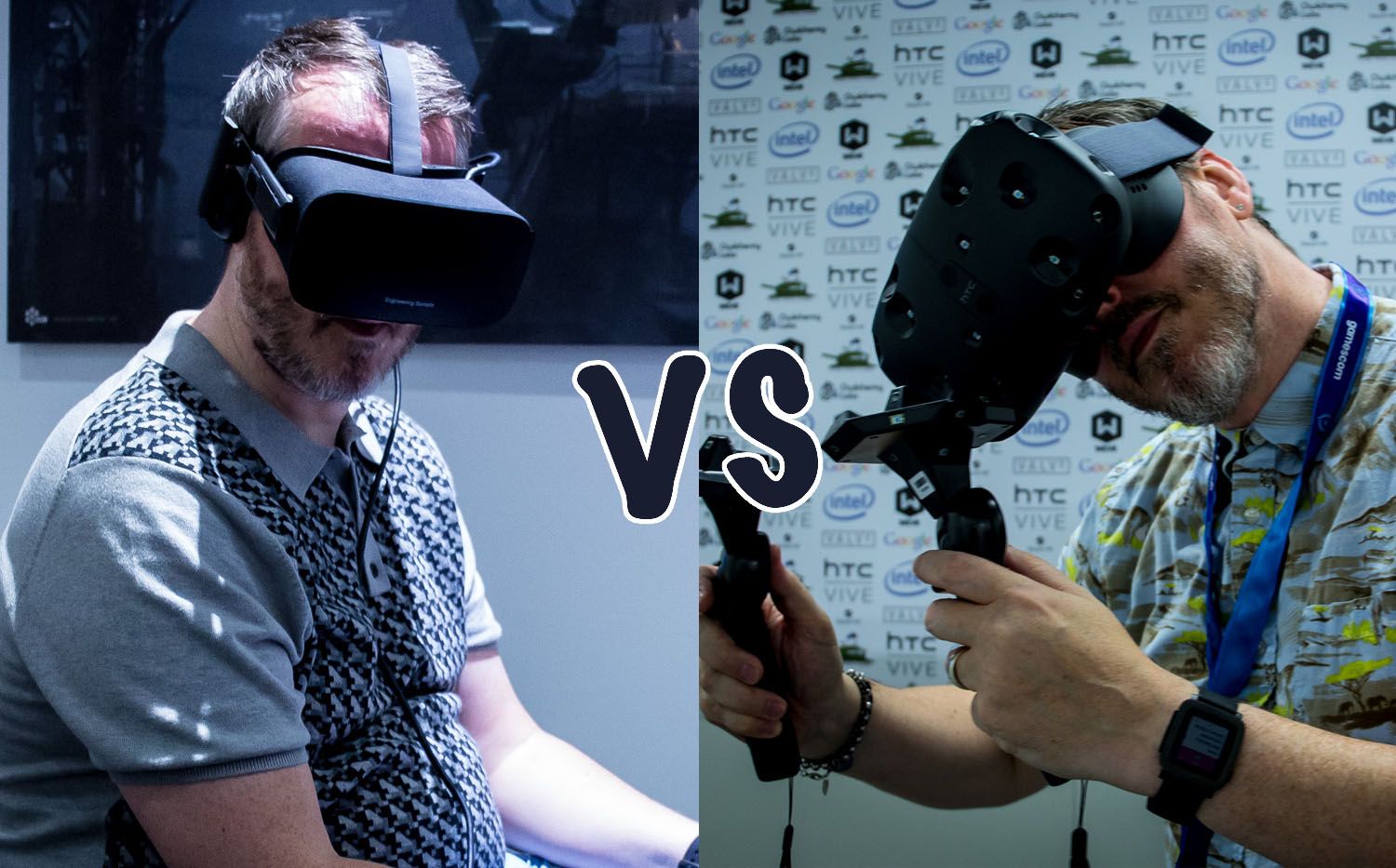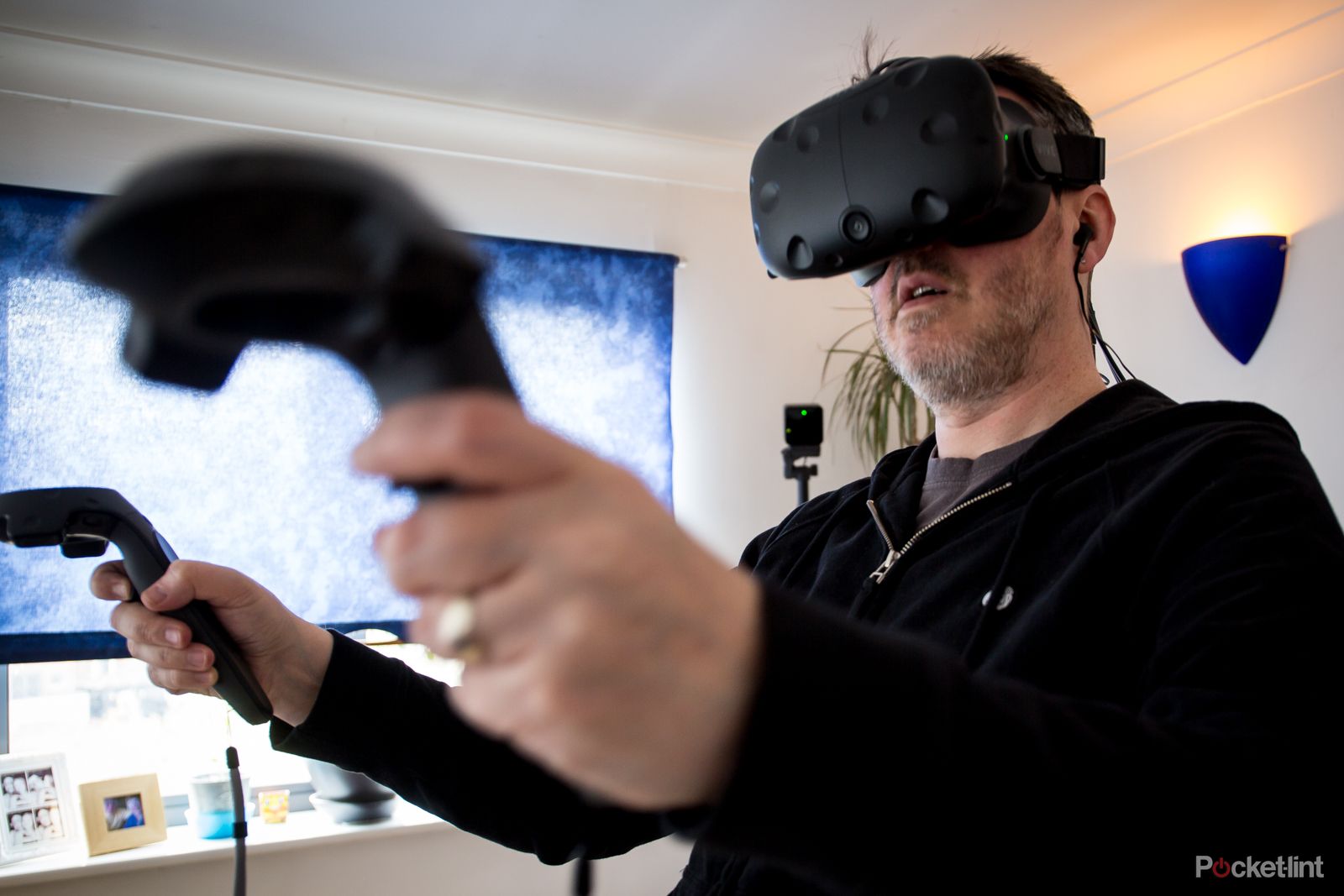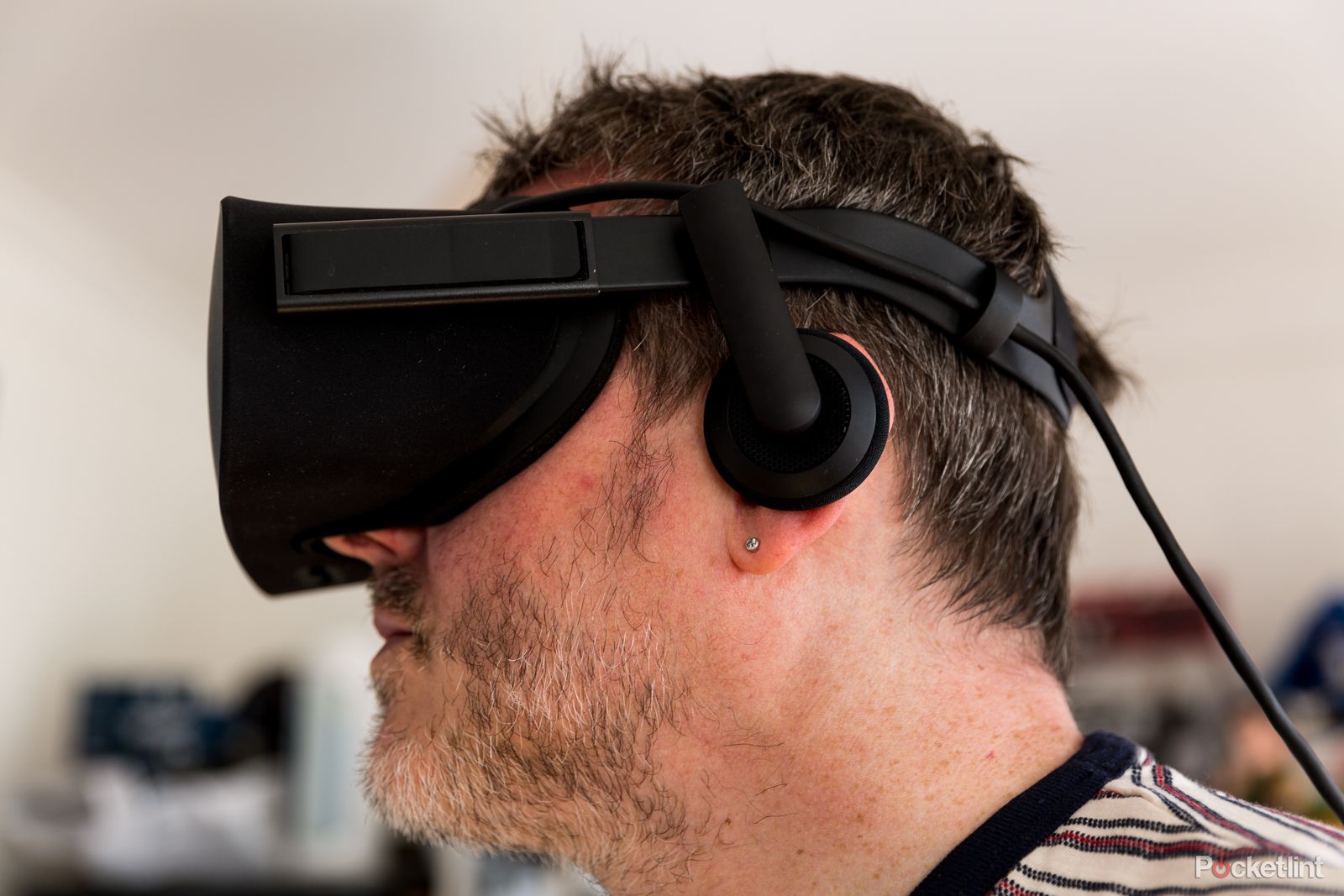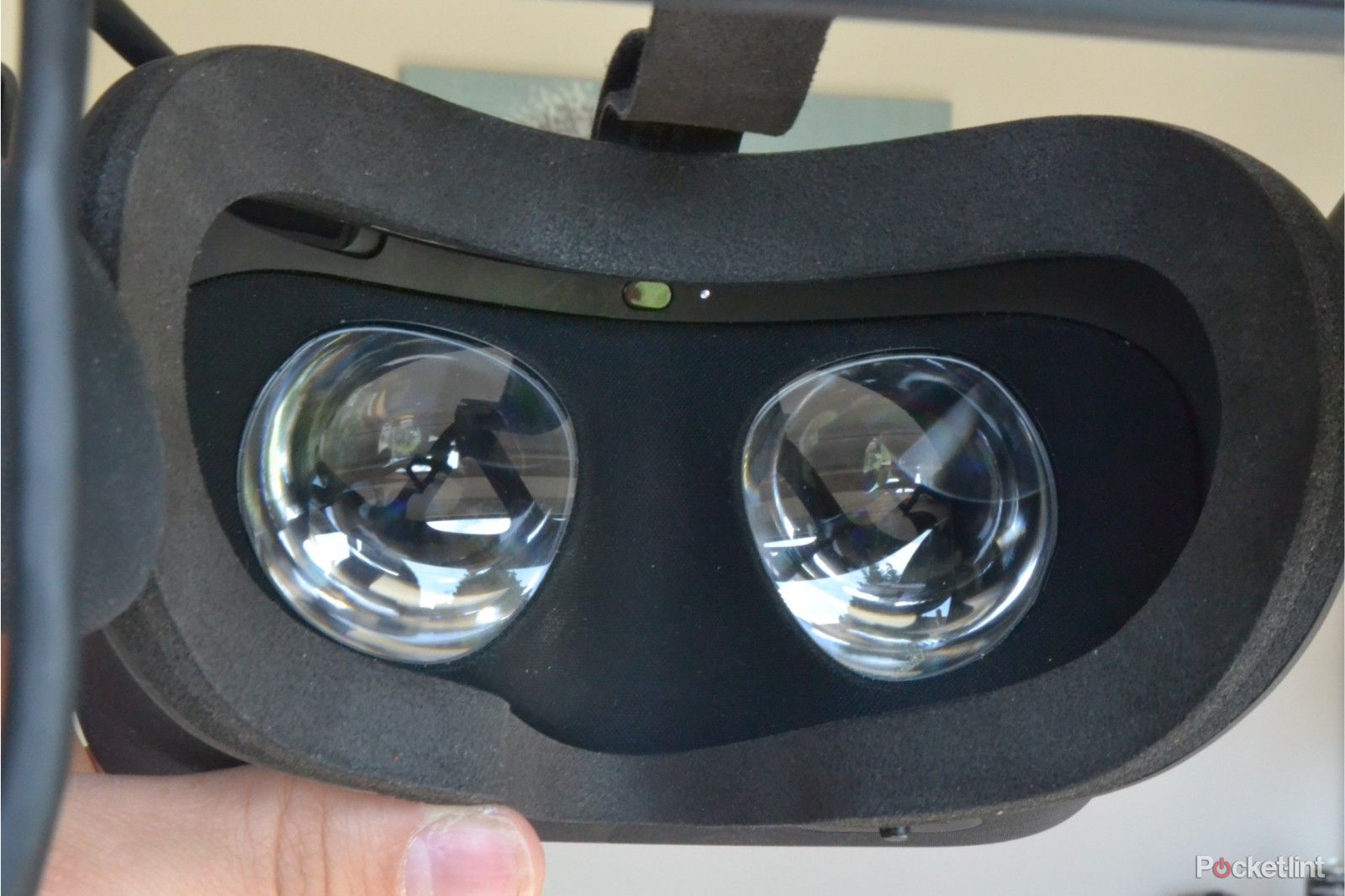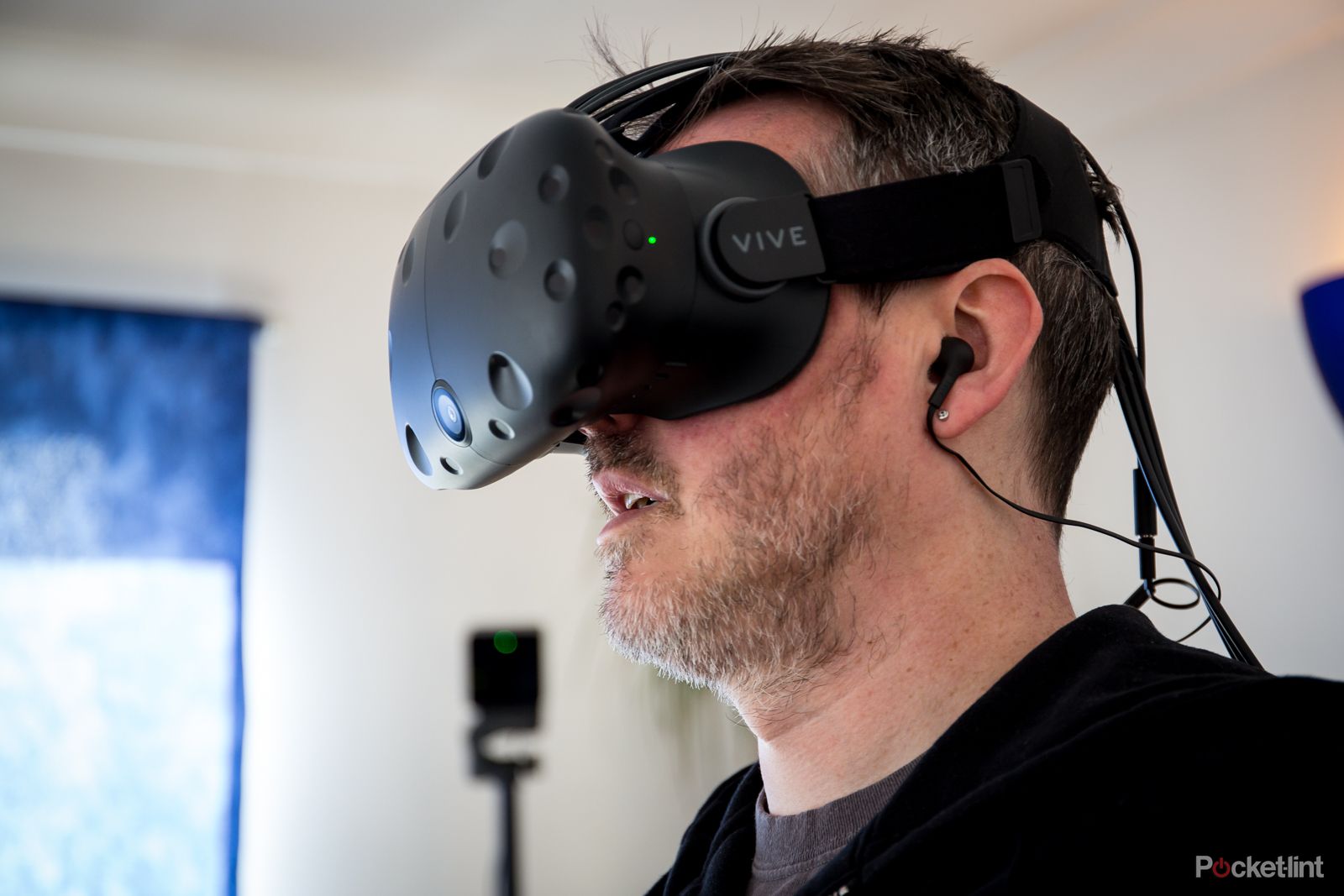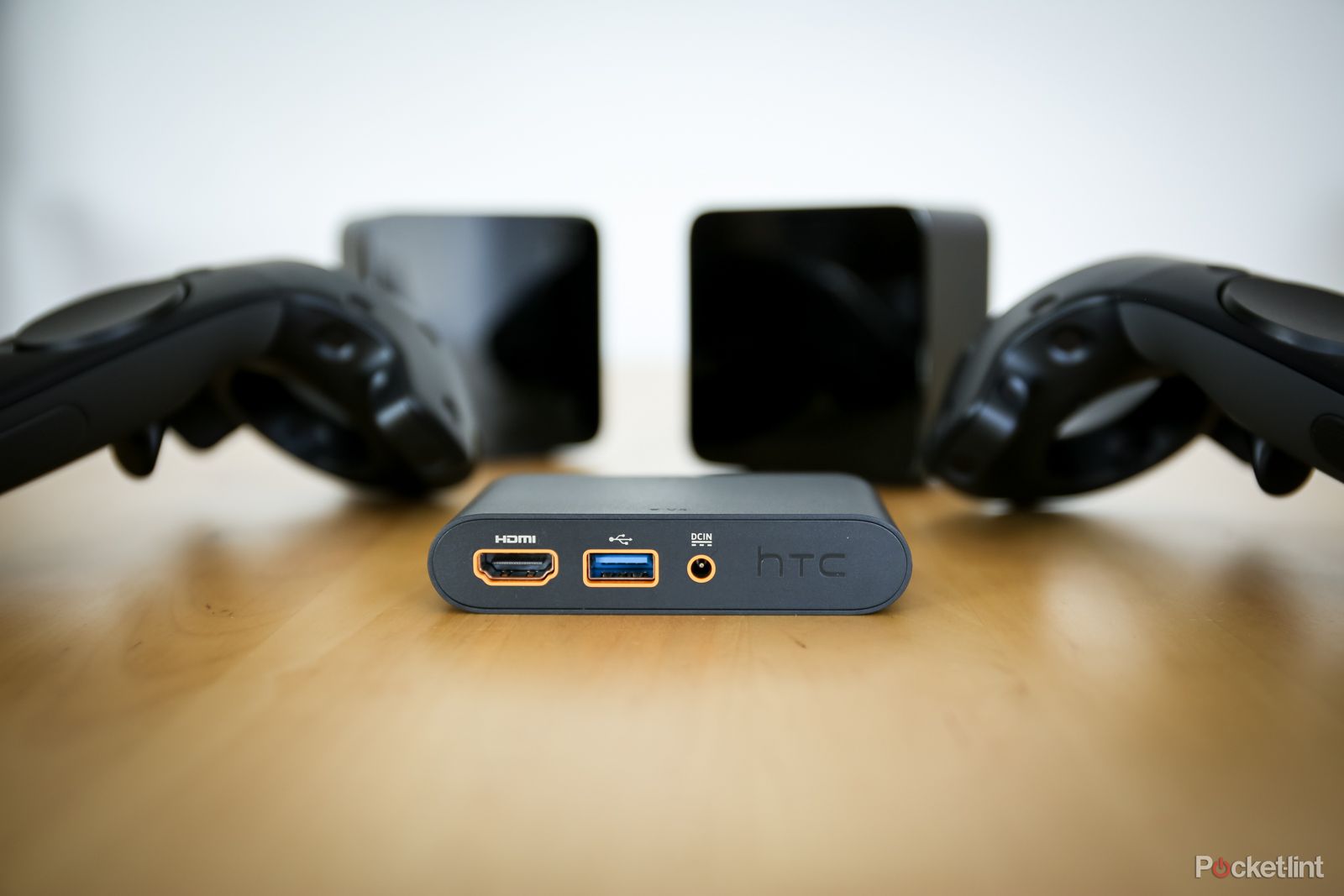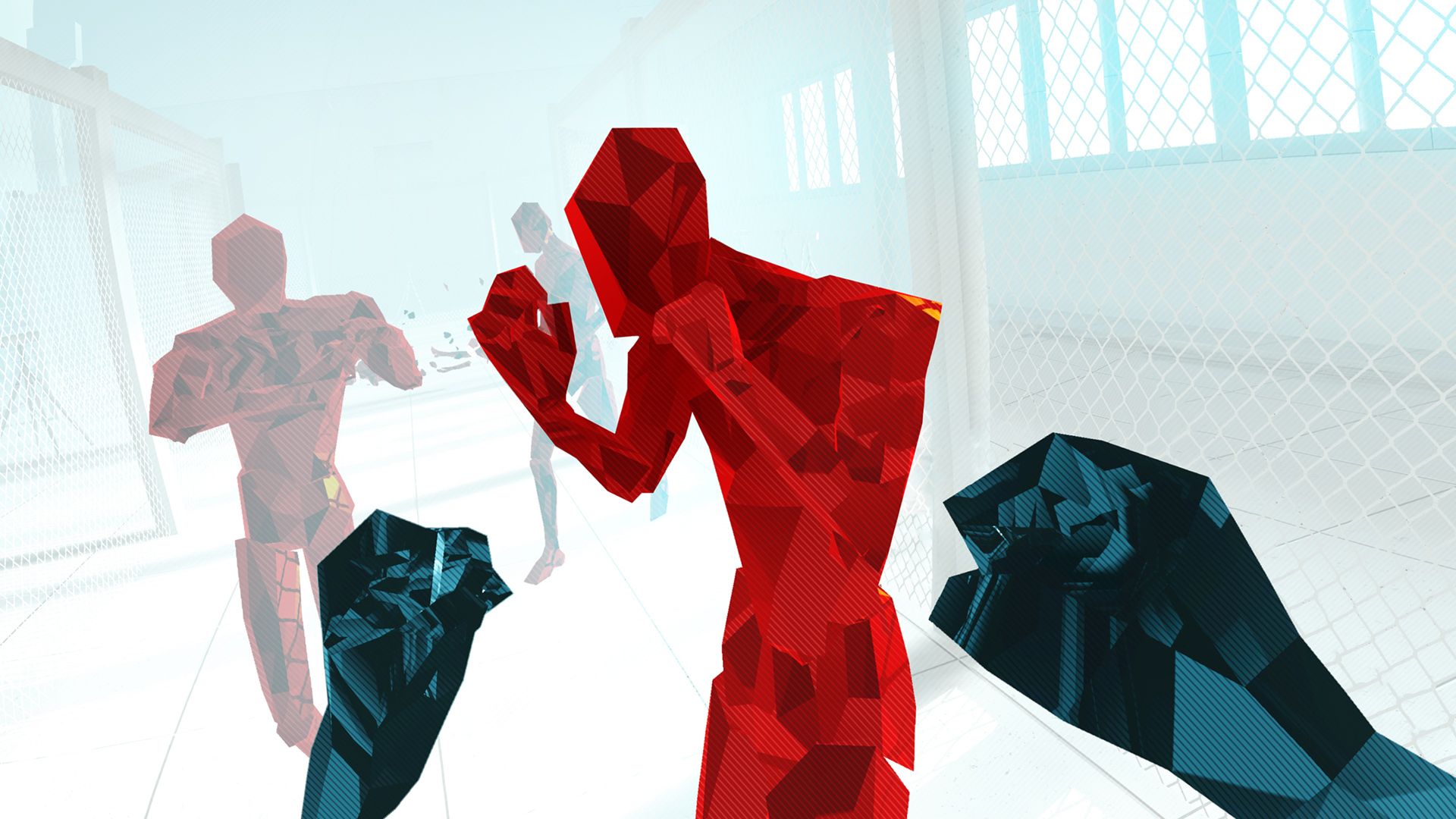If you're considering virtual reality, then chances are you've already heard of both the Oculus Rift and HTC Vive. These are the main two competitors if you're considering high-end, serious virtual reality technology.
They come with a hefty price tag and you need a good gaming machine to back them up, but these devices are also the best headsets in town when it comes to high-quality VR.
There are some differences though and if you're wondering what they are, then you've come to the right place as we're here to cover all the different specs and features so you know what you're getting.
Comfort, wearability and fun
- Oculus Rift: Built-in audio, easy adjustable head strap
- HTC Vive: Three velcro straps and material design
With time on its side, Oculus has refined its headsets over generations to create a consumer Rift that feels right. So much so that you simply forget you are wearing it.
It's not the weight as such but the structure of the headband that prevents the front section from feeling unbalanced.
To be fair on to Valve and HTC, the Vive is also a comfortable headset, although we find the standard setup with three velcro straps to be a bit fiddly. It also requires separate headphones, which add weight, while the Oculus Rift has a pair built-in.
The wires on both can be slightly problematic, as you'll often find yourself getting tangled up in them when gaming. Especially in full room-scale gaming experiences where standing and exploring is the name of the game.
Both headsets are designed to be as comfortable as possible - with weight balancing being a big consideration. Something that was taken even further in the more expensive HTC Vive Pro. That said, there's always a nagging pressure on your face with these devices, simply because of the amount of tech packed into the little box of tricks.
It's unfortunately all too easy to get hot and bothered while VR gaming. Especially with more active games where you're dodging, ducking, diving or throwing punches this way and that. We often found this resulted in steamed up lenses and plenty of sweating.
This problem is accounted for with the design of both headsets. Replaceable, washable facemasks ensure things don't get too hideous but it still can be bothersome. Even more so if you're a glasses wearer as well, though there's always the option of upgrading to prescription lens adapters which makes things more comfortable.
The Oculus Rift is probably the more comfortable of the two headsets, at least as standard. The HTC Vive can be upgraded for more comfort and better sound with the purchase of a Deluxe Audio Strap, but that will cost extra.
- Best HTC Vive accessories: Upgrade and enhance your VR experiences with these gadgets
- How to upgrade your HTC Vive, HTC Vive Pro or Oculus Rift with prescription lenses
Design features
- Oculus Rift: 391mm x 165mm x 307mm weighing 460g
- HTC Vive: 467mm x 229mm x 332mm weighing 555g
Neither headset is going to win fashion awards and you wouldn't fancy wearing one when out and about, even if you could. But let's face it, you won't give a jot what others can see when you are blasting aliens in a virtual world.
The Oculus Rift is sleeker and has a smaller footprint, but that's because the Vive has motion tracking tech in the front too including a front-facing camera and distinctive pockmarks.
Design is perhaps a little more important when it comes to the controls and the HTC Vive's controllers have plenty of different elements for functionality within games and the VR experiences. They look odd but feel intuitive, fit the hand well and are designed to be robust too. These controllers include a multitude of buttons, trackpads and built-in rechargeable batteries.
As you'd imagine, they're built to stand up to some abuse and the familiar pockmarks from the front of the headset also appear on the HTC Vive controllers - allowing them to be easily tracked by the base stations.
The Oculus Rift uses Touch controllers which are smaller and lighter than the Vive's controllers. These are also powered by AA-batteries rather than built-in units. These controllers are similarly packed full of easy access buttons that can be seen as virtual representations within the VR world when you've got the headset on.
We found both controllers work really well in any game. Though the tracking of the Vive controllers is slightly more accurate in most games thanks to the way the base stations work.
Both devices will also work with other controllers too - Xbox One controllers, mice and keyboard, even joysticks will work depending on what games you're playing. Pairing a wireless Xbox One controller with the Oculus Rift is a breeze. Sitting down at your keyboard is equally easy.
Display resolution and screen specifications
- Oculus Rift: 2160 x 1200 resolution, 90 Hz refresh rate, 110-degree field of view
- HTC Vive: 1080 x 1200 per eye (2160 x 1200 overall resolution), 110-degree field of view, 90Hz refresh rate
Both headsets have very similar displays, featuring 2160 x 1200 resolutions (1080 x 1200 for each eye) and 90Hz refresh rates. That latter statistic mean that frame rate is high enough to prevent sickness and ensure that the Rift and Vive each present a smooth experience.
The screen technology used on both is OLED, which is vibrant and well defined and while we could see pixels when we were really looking for them, most of the time the image was super sharp and clear.
Both headsets have issues with so-called screen-door effects, peripheral vision blurriness and pixel visibility. This isn't something your average gamer will notice straight away, but it's a result of the early days of the tech and design necessity. You're essentially sitting with your eyes pressed up against a screen - something our Mother always warned us not to do. The result isn't perfect, but both displays are still really impressive.
Eagle-eyed gamers will spot pixels and the edges of the screen, especially when wearing either headset clamped tight to their head, but generally, it doesn't matter as the games are an immersive joy.
The HTC Vive, in our opinion, has mildly better visuals than the Oculus Rift thanks to the make up of the lenses, but there's not much in it at all. If you're after the best, then the HTC Vive Pro is a further step up, but at a high cost.
Audio quality and features
- Oculus Rift: Integrated 360-degree spatial audio headphones and built-in microphone
- HTC Vive: 3.5mm jack for your own headphones, built-in microphone for multiplayer experiences
Audio quality is clearly an important part of the virtual reality experience. As well as visual cues, you need good audio to help immerse you in the VR Universe.
Out of the box, the HTC Vive requires use of separate headphones or earphones. You can theoretically plug in a gaming headset via a USB port on the top of the device, but we found it to be fairly narrow and fiddly. A 3.5mm jack allows you to plug in any headphones you like with ease.
There's an option of purchasing the Deluxe Audio Strap to improve both comfort and audio on the Vive and remove the need for extra wires. That though is an extra cost on top of your initial purchase.
The Oculus Rift, has integrated 360-degree spatial audio headphones built right into the design of the headset. These audio earcups are designed to be able to flip up out of the way when necessary. They can also be easily adjusted for the best comfort.
Tracking compatibility and upgrades
- Oculus Rift: Six degrees of freedom movement tracking including room-scale capabilities via IR LED tracking sensors
- Oculus Rift: Two IR LED sensors as standard. A third can be purchased for 360-degree (experimental) tracking
- Oculus Rift: Accelerometer, gyroscope, magnetometer and constellation tracking camera
- Oculus Rift: 5 x 5 feet maximum tracking area
- HTC Vive: 360-degree tracking base stations
- HTC Vive: SteamVR Tracking, G-sensor, gyroscope, proximity sensors and Chaperone boundaries
- HTC Vive: Single front-facing camera
- HTC Vive: 15 x 15 feet maximum tracking area
Both the Oculus Rift and HTC Vive require tracking sensors in order to monitor your movement in the playspace and translate that into the VR universe. These devices track both the headset and the controllers and beam that information back to your gaming machine. This allows for movement in any direction and a fully immersive experience.
As standard, the Oculus Rift uses two tracking sensors spaced roughly 6-feet apart plugged directly into your gaming machine via USB 3.0 connections. These sensors need a good view of the play space but then can track your movements within that area.
A third sensor can be purchased for 360-degree, experimental tracking.
The HTC Vive, meanwhile, uses two base stations that are plugged directly into the mains power supply. These need to be placed in opposite corners of the room with a clear view of the playspace. The headset can then be tracked with data being sent back to your machine and translated into the VR experience.
The HTC Vive Pro includes new SteamVR Tracking 2.0 base stations which allow for even larger play spaces. We expect this technology to improve in future too.
We found the HTC Vive's tracking to be a lot more accurate, easier to setup and less awkward too. A gripe with the Oculus Rift is the fact it requires at least three spare USB connections in order to function. Two just for the sensors. You also need your gaming machine setup in an area where you can position the sensors to see your playspace easily.
The HTC Vive's sensors can be placed anywhere in the room and mounted on the wall. They only require mains power, so aren't as finicky to set up. The Oculus Rift sensors do come with stands though, which the HTC Vive sensors do not. So which is preferable will depend on your current gaming setup and space.
If you have loads of room, the HTC Vive might be the better choice, especially if you make it wireless.
VR experiences
They say the proof is in the pudding and that is never truer than with VR hardware (apart from when tasting an actual pudding). The kit is all well and good, but if the experience when wearing it is a horrible one, you'll never return. Thankfully, our time spent with the HTC Vive and Oculus Rift have been equally great.
Both devices have been around for a while now and there have been plenty of games released since they launched.
There are literally thousands of games available to buy on Steam, via the Oculus Store or via Viveport subscription. The list is constantly growing and there is also a multitude of familiar titles in there that include games you know and love with VR capabilities. Those include the likes of Dirt Rally, Project Cars, Skyrim, L.A. Noire and even Hellblade: Senua's Sacrifice.
We've reviewed plenty of these VR games and experiences and found there's pretty much something for everyone. Whether you love great storytelling, RPG experiences, zombie shooters or just some VR hilarity, you're bound to find something you'll love.
We've also found game prices to be accessible. There are plenty of cheap and cheerful titles that are worth a look, as well as the more expensive experiences. We've also found a lot of free games, videos and more to play around with. You'll certainly not be short on choice, whatever device you decide on.
Many games work on both the HTC Vive and Oculus Rift, so you don't have to miss out on exclusives.
Price
Oculus Rift
The HTC Vive was the most expensive of these headsets when it first released at around £799. Prices of both devices have dropped a lot since then. The current pricing sees the Vive available for £499 and the Oculus Rift for £399.
Both devices will require a decent PC set-up too, so that will have to be taken into consideration when it comes to cost. Minimum specifications for a computer to run both headsets mean you're looking at around £1,000 outlay for a decent gaming PC if you don't already have the correct hardware.
Conclusion
Truth be told, both headsets are as good as each other in technical terms. The HTC Vive has full external motion tracking, made possible through the use of cameras set up in the play area and we find the tracking to be a little more accurate.
The Vive also gives you more room to play in, but not many of us have the space to wander around in a VR headset, even if it has clever "holodeck" obstacle recognition features. Instead, more often than not we'll experience VR in the way the Oculus Rift caters for - sitting down and with a gamepad in our hands. If you have space though, standing, room-scale experiences are incredible.
- Read our full review: Oculus Rift
- Read our full review: HTC Vive

